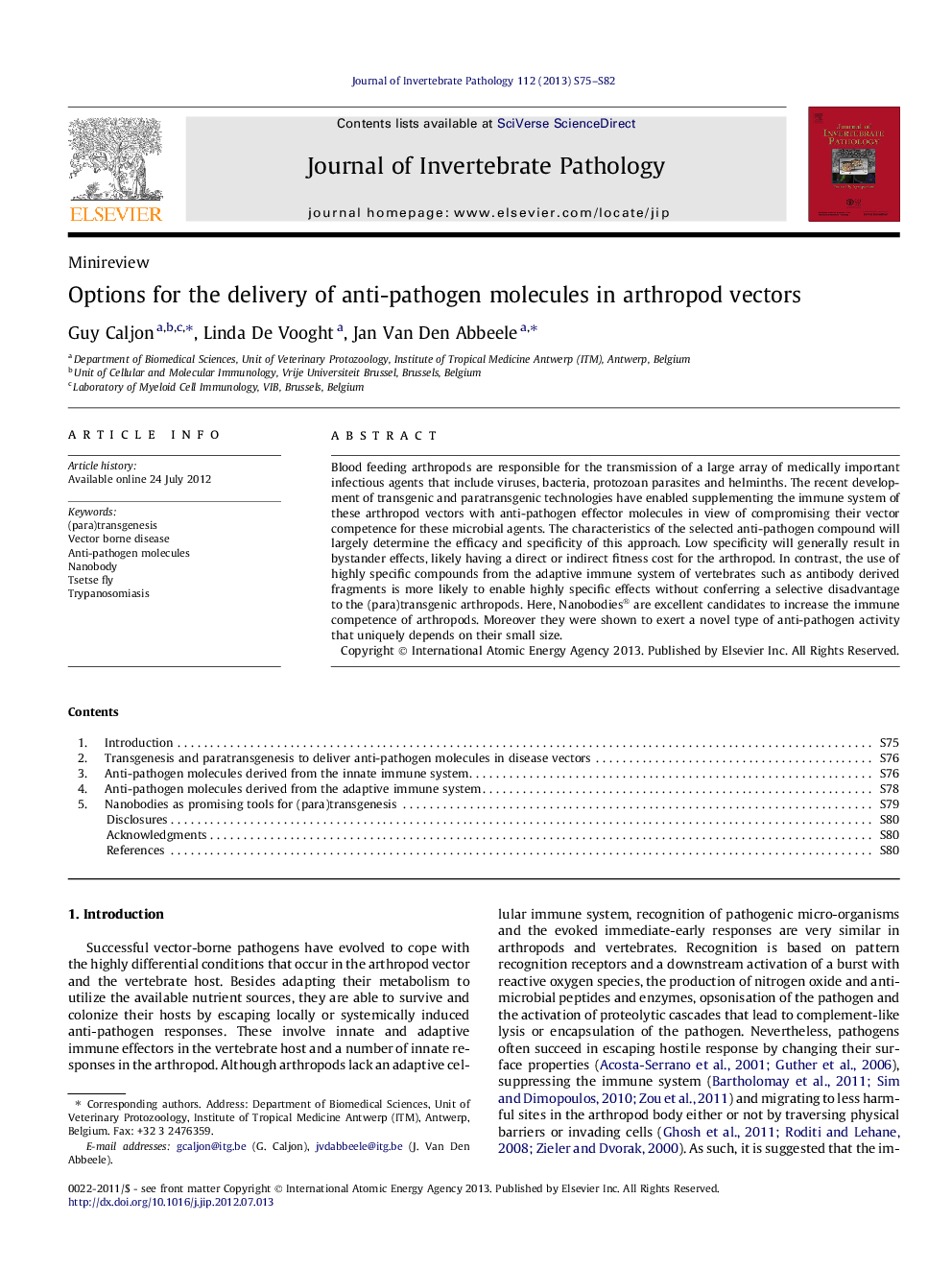| Article ID | Journal | Published Year | Pages | File Type |
|---|---|---|---|---|
| 6389612 | Journal of Invertebrate Pathology | 2013 | 8 Pages |
Blood feeding arthropods are responsible for the transmission of a large array of medically important infectious agents that include viruses, bacteria, protozoan parasites and helminths. The recent development of transgenic and paratransgenic technologies have enabled supplementing the immune system of these arthropod vectors with anti-pathogen effector molecules in view of compromising their vector competence for these microbial agents. The characteristics of the selected anti-pathogen compound will largely determine the efficacy and specificity of this approach. Low specificity will generally result in bystander effects, likely having a direct or indirect fitness cost for the arthropod. In contrast, the use of highly specific compounds from the adaptive immune system of vertebrates such as antibody derived fragments is more likely to enable highly specific effects without conferring a selective disadvantage to the (para)transgenic arthropods. Here, Nanobodies® are excellent candidates to increase the immune competence of arthropods. Moreover they were shown to exert a novel type of anti-pathogen activity that uniquely depends on their small size.
Graphical abstractDownload full-size imageHighlights⺠Transgenesis can augment the vectors' immune system with anti-pathogen effector molecules. ⺠Many arthropods transmit a large array of medically important infectious agents. ⺠Nanobodies are excellent candidates to increase the immune competence of arthropods. ⺠Nanobodies exert a novel type of anti-pathogen activity due to their small size.
